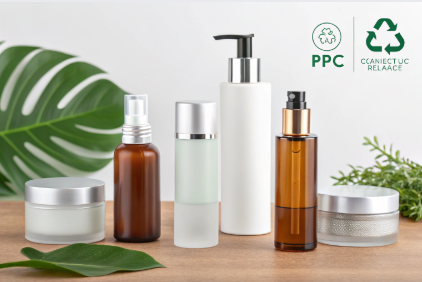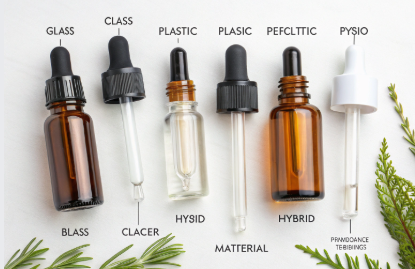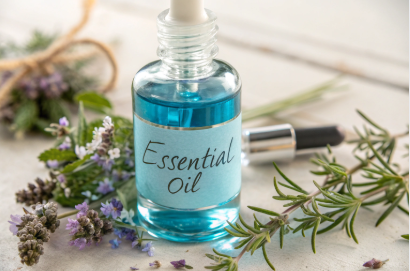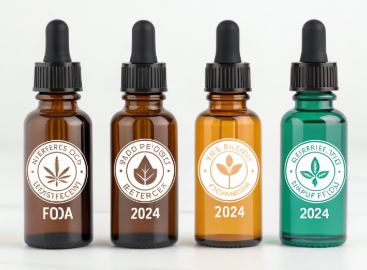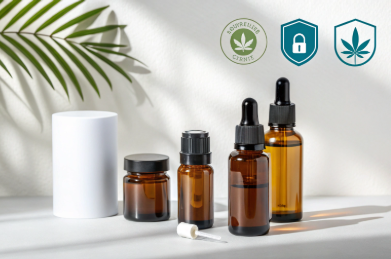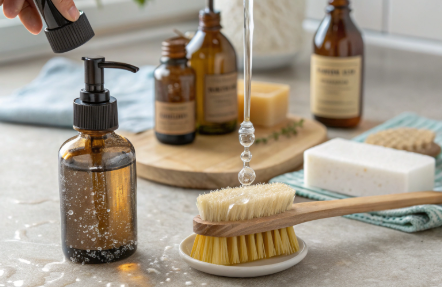From skincare to supplements, today’s packaging must do more than contain—it must communicate responsibility.
PCR (post-consumer recycled) bottles are becoming a material of choice for both cosmetics and pharmaceuticals due to rising sustainability demands, regulatory changes, and consumer expectations.
This article explores how these trends are reshaping the bottle market—and what suppliers and buyers need to do to stay ahead.
Why Are PCR Bottles Gaining Popularity in Cosmetics and Pharmaceuticals?
Sustainability used to be a bonus. Now, it’s a baseline—especially for regulated and brand-sensitive sectors.
PCR bottles offer a sustainable, cost-effective, and regulatory-friendly solution, making them a growing favorite in both the cosmetic and pharmaceutical industries.
Key Drivers of Adoption
| Industry | Motivation | Typical Application |
|---|---|---|
| Cosmetics | Brand image, eco-alignment | Serums, lotions, toners |
| Pharmaceuticals | Regulatory push, compliance | Syrups, supplements, creams |
At PauPack, we’ve seen a 70% year-over-year increase in PCR packaging inquiries from beauty and wellness brands aiming to align with green certifications and Gen Z expectations.
What Regulatory and Sustainability Pressures Are Driving PCR Adoption?
Going green is no longer just good PR—it’s becoming a legal requirement.
Governments across Europe, North America, and Asia are implementing packaging regulations that either mandate or incentivize PCR use, especially for single-use consumer products.
Global Regulation Snapshot
| Region | Regulation | PCR Impact |
|---|---|---|
| EU | Packaging and Packaging Waste Directive | Minimum recycled content targets |
| USA (CA/NY/WA) | Plastic Packaging Tax | PCR content tax exemptions |
| Japan | Plastic Resource Circulation Act | Promotes circular packaging practices |
PauPack’s PCR bottles are designed to meet both regional and international sustainability benchmarks, including ISO, EN, and FDA material standards for pharma-grade applications.
How Are Brands Leveraging PCR for Consumer Trust and ESG Goals?
PCR packaging isn’t just a compliance play—it’s a powerful brand story.
Cosmetic and pharmaceutical brands are using PCR bottles to signal responsibility, support ESG reporting, and differentiate in saturated markets.
Brand Value Levers
| Strategy | Execution | Consumer Impact |
|---|---|---|
| “Green Label” Claims | “Made with 50% PCR” | Builds trust with eco-conscious buyers |
| ESG Reporting Metrics | Carbon reduction from PCR vs. virgin PET | Attracts investors and retail partners |
| Storytelling Packaging | Visible texture or color variation | Visual proof of recycled content |
At PauPack, we help brands print PCR % content directly on bottles, apply eco-certification icons, and produce QR-enabled traceability labels—turning packaging into a transparent, traceable asset.
What Types of PCR Bottles Are Most In-Demand by Industry Segment?
Not all PCR bottles are created equal. Different use cases require different specs.
Cosmetic buyers prioritize aesthetics and customizability, while pharma buyers emphasize barrier protection, dosage control, and compliance-ready materials.
Top PCR Bottle Formats by Industry
| Industry | Popular PCR Bottle Types | Required Features |
|---|---|---|
| Skincare | Pump bottles, droppers, jars | Clarity, color, decoration options |
| Haircare | Squeeze bottles, trigger sprays | Sturdiness, capacity up to 500ml |
| Supplements | HDPE pill bottles | Child-resistant caps, FDA grade |
| Topical Pharma | Airless PCR pumps | Oxygen barrier, ISO cleanroom packing |
Our PCR packaging range at PauPack includes over 80 stock molds across droppers, pumps, jars, and vials—supporting both aesthetic beauty packaging and functional pharma containers.
How PauPack Supports Beauty and Pharma Brands with Scalable PCR Solutions?
Scaling sustainably takes more than just switching materials—it takes a reliable partner with full-scope capabilities.
PauPack offers full-stack PCR packaging support—from design and decoration to bulk production and global logistics—helping brands meet sustainability and regulatory targets with ease.
Why Choose PauPack for PCR Bottles
-
🌱 ISO/FDA/EN-compliant PCR materials
-
🔁 100% recyclable bottle and cap combinations
-
🧴 Low-MOQ options starting from 1,000 pcs
-
🎨 OEM/ODM customization (color, shape, printing)
-
🚚 JIT delivery via global warehouse network
Whether you’re a DTC skincare startup or a regional pharmaceutical distributor, PauPack’s scalable PCR bottle solutions help you meet green goals—without sacrificing performance or design.
How Global Supply Chains Are Adapting to PCR Packaging Demand?
A surge in demand means suppliers, molders, and material vendors must adapt—fast.
Global packaging supply chains are expanding PCR resin sourcing, tooling investments, and manufacturing capacity to meet growing demand from beauty and pharma sectors.
Key Adaptations Across the Supply Chain
| Stage | Evolution | Benefit to B2B Buyers |
|---|---|---|
| Resin Sourcing | More certified PCR suppliers | Improved traceability |
| Mold Production | New tooling optimized for PCR strength | Faster launch cycles |
| Decoration Techniques | Adapted for textured PCR surfaces | Clean branding on recycled material |
| Quality Inspection | Specialized testing for PCR clarity and strength | Reduced defect rates |
At PauPack, we’ve partnered with certified PCR resin vendors in Southeast Asia and Europe, and updated our QC systems to include drop/burst/UV exposure tests specific to PCR bottle integrity.
What Material Innovations Are Enhancing PCR Bottle Performance?
The early days of PCR plastic had drawbacks—brittleness, dull appearance, odor—but no more.
Material innovations in compounding, deodorizing, and blending are now producing PCR bottles that rival virgin plastic in performance, safety, and aesthetics.
Innovations Making PCR Bottles Competitive
| Innovation | Result | Application |
|---|---|---|
| Deodorized PCR | Removes odor from reused resins | Skincare, supplements |
| Hybrid PCR Blends | 50–70% PCR mixed with virgin resin | High clarity without fragility |
| Food/Pharma-Grade PCR | Certified by FDA/EFSA | Safe for ingestibles, topicals |
| Color-Stable PCR | Maintains brand hue consistency | Cosmetic packaging lines |
PauPack offers multiple PCR levels (30%, 50%, 100%) and pre-tested blends for clients based on product sensitivity and visual requirements. These options help clients balance eco claims and technical needs.
Which Bottle Sizes Are Most Popular in Cosmetics vs. Pharma?
Volume isn’t just a functional choice—it’s a product positioning tool.
In cosmetics, PCR bottles are trending in smaller, premium-look sizes, while in pharma, efficiency and dosage standardization drive bulk orders of mid-range volumes.
Top-Selling PCR Sizes by Industry
| Industry | Common Volumes | Why It Works |
|---|---|---|
| Skincare | 15ml, 30ml, 50ml | Perfect for serums, oils, creams |
| Haircare | 100ml, 150ml, 250ml | Suited for shampoo, scalp treatments |
| Pharmaceuticals | 60ml, 120ml, 250ml | Ideal for syrups, oral liquids |
| Supplements | 100cc, 150cc, 300cc | For capsules and gummies |
PauPack carries molds for 5ml to 500ml PCR containers, allowing clients to launch coordinated skincare sets or scale supplement lines using consistent material and design.
How Do Leading Brands Position PCR Bottles in Their Product Lines?
Smart brands aren’t just using PCR—they’re turning it into a selling point.
Market leaders in both beauty and wellness are positioning PCR bottles as a badge of environmental responsibility and aligning their packaging stories with broader ESG goals.
PCR Packaging Brand Strategies
| Strategy | Execution | Impact |
|---|---|---|
| Limited Edition “Green Lines” | PCR-only SKU runs | Product + cause marketing synergy |
| Visual Identity Refresh | New labels, frosted finishes, eco icons | Communicates transparency and trust |
| Refillable + PCR Hybrid | PCR refills + glass outer shell | Combines luxury with eco ethics |
| PCR % Disclosure | Clearly labeled bottle content | Aligns with packaging laws, builds credibility |
PauPack supports full storytelling packaging—QR codes, eco icons, embossing, and custom recycled-label printing to help brands reinforce their PCR switch across touchpoints.
What’s Next for PCR Bottles in a Post-Regulation Packaging World?
As PCR becomes the norm, innovation will focus on refinement, efficiency, and lifecycle optimization.
The future of PCR bottles lies in smart manufacturing, closed-loop programs, digital tracking, and blended sustainability approaches combining PCR with compostable or refillable formats.
Emerging Trends to Watch
-
🔄 Circular Packaging Models: Refill/recycle return programs
-
🧠 Smart Labels: Track bottle origin, recycled content, and disposal tips
-
♻️ Hybrid Materials: PCR + bioplastics or bamboo fiber blends
-
🧪 Advanced Coatings: PCR bottles with glass-like barrier properties
At PauPack, we’re already piloting PLA + PCR hybrids and planning full-chain traceability QR systems that connect each bottle to its material origin and disposal advice—enhancing both compliance and consumer engagement.
Conclusion
PCR bottles are no longer a niche—they’re the future of packaging for brands that want to lead responsibly. With PauPack, you get more than a bottle—you get a sustainable packaging partner.





